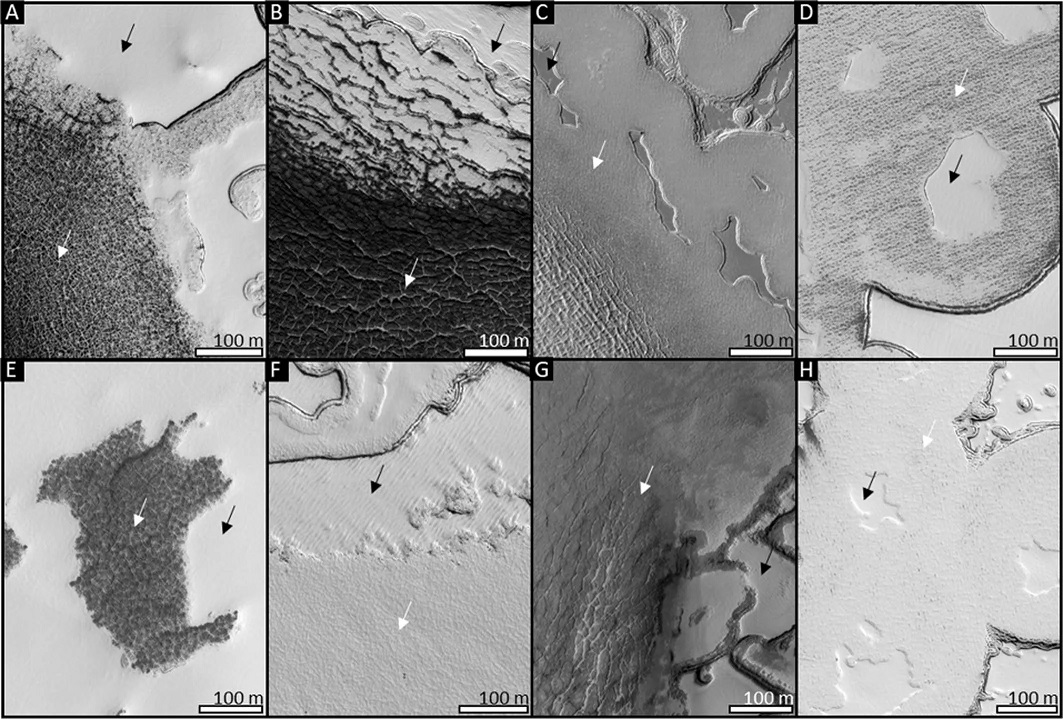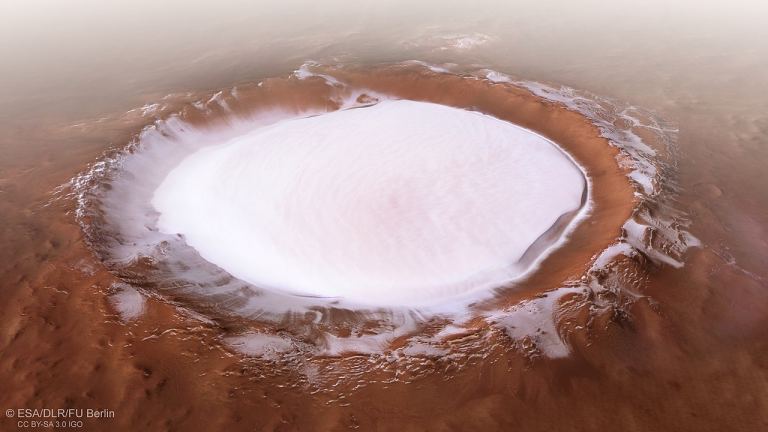From the surface, Mars may seem like a dry, desert-like world lacking water, but a closer look at the planet’s poles will some striking structures: massive polar ice caps.
At the north pole, the ruddy terrain peeks through the ice, like zebra stripes. In the south pole lurks a mystery, a massive deposit of frozen carbon dioxide and water ice. Scientists have spent decades trying to understand how it formed and how it’s linked to the amount of carbon dioxide (CO2) in the Martian atmosphere.
A pair of scientists in the 1960s came up with a plausible theory, and now, decades later, a new study published in Nature Astronomy may have confirmed their findings.

The massive deposit — measuring 3,280 feet (1 kilometer) thick — contains sheets of water ice and carbon dioxide arranged in alternating layers, like a cake. It’s topped off with a thin frosting of carbon dioxide ice, and scientists noticed something interesting: the massive ice deposit contains as much carbon dioxide as the entire Martian atmosphere.
Peter Buhler, a planetary scientist at NASA’s Jet Propulsion Laboratory led the new study. The team used computer simulations to map out the ice, and they were surprised at how closely their models matched with what Robert B. Leighton and Bruce Murray predicted decades ago.
“Usually, when you run a model, you don’t expect the results to match so closely to what you observe,” he said in a statement. “But the thickness of the layers, as determined by the model, matches beautifully with radar measurements from orbiting satellites.”

The ice cap puzzled researchers because according to science, it shouldn’t exist. That’s because water ice is more thermally stable and darker than carbon dioxide ice, which means that it should destabilize when layered between water ice.
However, the new model explains this behavior. Buhler and his team say there are three reasons why the frozen carbon dioxide exists. First, Mars wobbles as it orbits the sun, and when it does, the slight changing of the tilt alters the amount of sunlight that hits the ice. Second, each type of ice reflects the sun a bit differently. And lastly, because of the exposure to sunlight, the carbon dioxide sublimates–meaning it goes directly from a solid to a gas–which alters the atmospheric pressure.
As Mars wobbles, the amount of sunlight reaching the ice varies, causing the ice to form and then later sublimate. When the carbon dioxide ice was forming, water ice would’ve been trapped with it. But when that ice sublimated, the more stable water ice would have remained behind, forming the layers we now see at the south pole.
Mars’ climate, just like Earth’s, has changed over millions of years. To that end, not all of the carbon dioxide ice was lost; some were left behind to build up the varying layers we see—a process that has altered the red planet’s atmospheric pressure.
This is what Leighton and Murray hypothesized back decades ago, and this is what Buhler’s new model shows.
“Our determination of the history of Mars’s large pressure swings is fundamental to understanding the evolution of Mars’s climate, including the history of liquid water stability and habitability near Mars’s surface,” Buhler said in a statement.
By understanding what processes formed the south polar ice cap, scientists can better understand more of what happened in Mars’ history.

(adsbygoogle = window.adsbygoogle || []).push({});
<!–
–>
var disqus_shortname = «teslarati»;
var disqus_title = «Mars› longtime polar mystery may have finally been solved»;
var disqus_url = «https://www.teslarati.com/mars-longtime-polar-mystery-may-have-finally-been-solved/»;
var disqus_identifier = «teslarati-129031»;

